Multiples adventures
Dominicans and Franciscans in Maya land - XVIth century
A trip by Las Casas to Tabasco and Chiapas
Pedro de Barrientos in Chiapa de Corzo
Las Casas against the conquistadores
Fuensalida and Orbita, explorers
Numerous studies
An ethnologist friar, Diego de Landa
Two teachers, Juan de Herrera and Juan de Coronel
Two historian friars, Cogolludo and Remesal
A multitude of buildings
A Franciscan turned architect: Friar Juan de Mérida
The Valladolid convent in the Yucatán
The Izamal convent and its miracles
In the Yucatán, a church in every village
A Dominican nurse, Matías de Paz
A difficult task: evangelization
The creation of the monastery of San Cristóbal
The Dominican province of Saint-Vincent
An authoritarian evangelization
Franciscans and the Maya religion
The failure of the Franciscans in Sacalum, the Yucatán
Domingo de Vico, Dominican martyr
The end of the adventure
Additional information
The Historia Eclesiástica Indiana of Mendieta
The road of Dominican evangelization in Guatemala
The convent of Ticul, as seen by John Lloyd Stephens
The Franciscans in the Colca valley in Peru
The convent route of the Yucatán in the XVIth century
The dominican mission of Copanaguastla, Chiapas
Available upon request: -
general information upon Maya countries, - numbered texts
on the conquest and colonization
of Maya countries
Address all correspondence to:
moines.mayas@free.fr
|
TWO HISTORIAN FRIARS, COGOLLUDO AND REMESAL
|
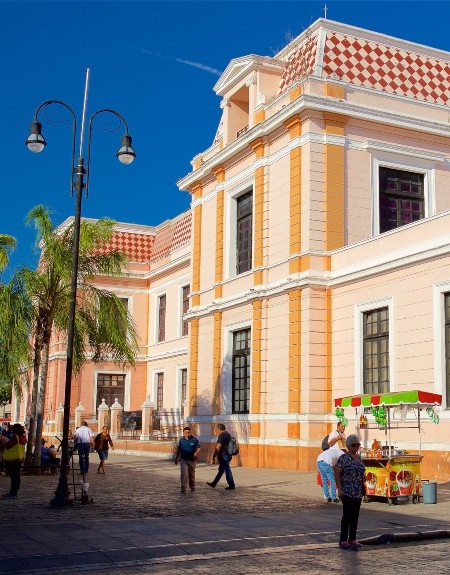
Merida, The History City Museum
They are partisan historians who write for the glory of their religious order, the Franciscan Order for Cogolludo, and the Dominican Order for Remesal. Their works want to be edifying and are full of stories about the lives of saintly men and miracles. They side openly with their community in the narration of their conflicts with the ecclesiastical authorities and the Spanish colonizers.
As to their method, they copy without checking for accuracy whole chapters of stories written by their predecessors, as was done in those days. But they have interviewed witnesses, researched the archives, and they gather in their enormous volumes quantity of information on that period of time. They are often the only ones to quote texts, to narrate events and describe characters who would have otherwise been forgotten.
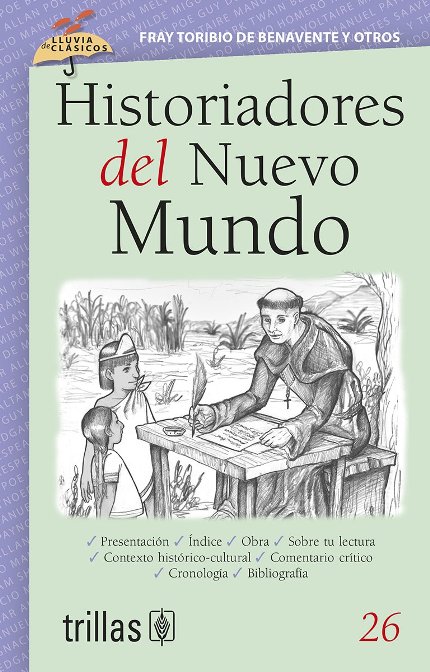
Historiadores del Nuevo Mundo, Trillas, 2013, Excerpts from fray Toribio de Benavente, "Motolinia", fray Diego de Landa and fray Bartolomé de las Casas works
Fray Diego López de Cogolludo.
He was a native of Alcalá de Henares in Spain, and took the habit of St. Francis at the convent of San Diego, 31 March, 1629. He emigrated to Yucatán, where he became successively lector in theology, guardian, and finally provincial of his order.
His work, the "Historia de Yucatán", published in Madrid in 1688, is an important work, full of information personally gathered at a time when older sources, written and oral, that have now partly disappeared, were accessible. Cogolludo consulted and used the writings of Bishop Diego de Landa to a considerable extent, like than the "Historia de Yucatán, Devocionario de Nuestra Señora de Izamal y Conquista Espiritual" by Bernardo de Lizana and the "Monarquía indiana" by Juan de Torquemada.
The first three chapters of the first part of the Historia deal with the civil history of the Yucatan peninsula, whose people, the Maya, were conquered by the Spanish in three long campaigns between 1527 and 1545. Chapter four contains a thorough description of the land, the customs and the beliefs of the Mayan people, whom López thought were descended from the Phoenicians and the Carthaginians. The remaining chapters are dedicated to the history of the Franciscan Order’s progress in converting and instructing the Indians, and are written in the laudatory tone typical of religious history.
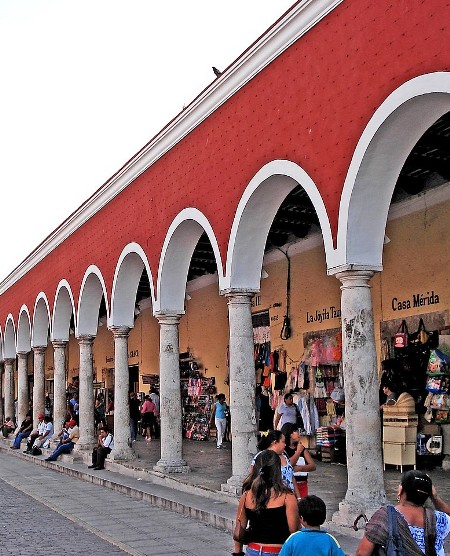
Mérida, today : Cogolludo spent a large part of his life in the Franciscan convent of the city, destroyed in the XIXth century and replaced later by the market San Benito, located near this arcade, the Portal de Granos, built in 1770 and dedicated primarily to the warehousing and sale of maize, beans, and other grains.
The Dominican Alonso Sandin was requested to examine Cogolludo’s work before its publication. Here is his opinion:
Cogolludo’s "History of the Yucatán"
"I read with special interest, upon V.A.s’, the book entitled "History of the Yucatán", written by M.R. Father friar Diego Lopez de Cogolludo, retired reader and perpetual father of the province of the Serafic Order of my father Saint Francis, and I am of the same opinion as the great Saint-Augustine, in the second book of the Christian Doctrine, that History must faithfully tell past events and that they must be available to all for their benefit and instruction : Historia facta derat fideliter, acque utiliter."
It is very difficult to recompose the past
"I cannot negate the difficulty of this subject for our historian, who found very little information in the archives established by the first Conquistadores of this province of the Yucatán, which led past historians to introduce them to us with great differences, and since the events of antiquity went raving in the works of Orators, Poets, and Historians, Father Mendoza had concluded In Virid Lib es de Floribus varijs, problema 44 that to build a History is such an arduous process that only the best connoisseur of all these authors could achieve it with happiness […] The subject matter does not present less difficulties, as much as regarding lack of information as regarding his obligation to exploit the official documents of the times, to which is added the study of other Histories, in order to find from one or the other the most real events;"
Cogolludo assembled truthful documents
"It is why the author must be commended, all the more so as his History contains both conditions that the Great Saint Augustine demands of History : Historia facta narrat fideliter, because if it is examined without passion, it is possible to find in it the faithful narration of the events regarding this initial conquest, which he was able to verify in the documents; he raises doubts on the documents based on probabilities, or old testimonies, without giving them more credit than testimonies or reasons they refer to : he omits nothing from what he was able to verify, and casts doubt on only the facts that he was not able to carefully verify. He relies on the ancient writers to vigilantly discover what is true in the Archives, and with a religious modesty, he refutes what he found to be less conform to the facts, thus applying the prime quality that the great Saint-Augustine requests of History : Historia facta narrat fideliter."
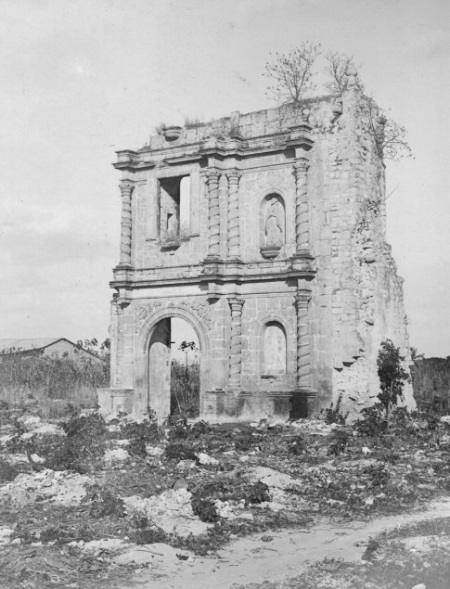
Ruins of the Great Franciscan convent, circa 1890
His History of the Yucatán may be used as an example by the Spaniards
"The second quality is no less prevalent, its usefulness for the readers, atque utiliter, since the military men should have a lot to imitate in the courage of these first Conquistadores, in the slyness they used in such a difficult business and arduous undertaking, especially since they were few, and the barbarians so many. Political men would find there good examples of government, since our predecessors managed to organize Republics that were so well governed, amid so many people lacking the light of reason, that it would not be easy to find others based on better laws in this whole New World; and what is even better is that the ecclesiastical missionaries would find many famous saintly men to imitate among the priests of my Father Saint Francis, who established over there the evangelical light, since we realize that they spared no effort to achieve that aim, confronted danger to bring souls to God, working day and night when emergencies requested it, to relentlessly teach, while at the same time tending to the temporal needs of their brothers, in order to implant evangelism more easily, accomplishing all these tasks in perfect poverty and selflessly, like real apostolic saints, ignoring their own needs to tend more to those of others, and since it bore so many fruit, as History shows us : for these reasons, and because it has nothing against Faith, or good customs, I am of the opinion to grant the requested authorization (to print). Madrid, 15 August 1687. Friar Alonso Sandin."
(APROBACION DEL REVERENDISSIMO Padre Fr. Alonso Sandin, del Orden de Predicadores, Maestro en Sagrada Theologia, Definidor del Capitulo General y Procurador General de la provincial del Santo Rosario de Philipinas, 15 de Agosto de 1687)
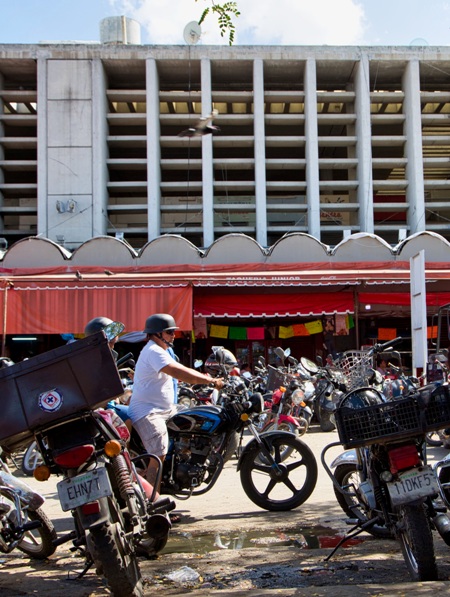
The market San Benito in Merida, built in 2004 on the site of the franciscan convent ruled by Cogolludo
Fray Antonio de Remesal
Antonio de Remesal, born in Alariz, Galicia, in 1570, died in Madrid in 1639. He studied in the University of Salamanca, was graduated as doctor of theology, and united with the Dominicans. In 1613 he was elected visitor of the missions of Central America, and during his sojourn in the country in 1613-1617 collected the materials for his " Historia de la provincia de San Vicente de Chiapa y Guatemala", or "Historia general de las Indias occidentales y particular de la gobernación de Chiapa y Guatemala" (Madrid, 1619).
Remesal’s is an extensive chronicle, enhanced by inclusion of numerous civil documents, especially cédulas reales, and ecclesiastical ones. Remesal records data from 1526 through 1619, with a few forays into native history. The entire work is divided into eleven books relating the conquest of Central America, the work of the Dominicans in Guatemala, especially Fray Betanzos and Bartolomé de las Casas, their apostolate among the Indians, the maltreatment and enslavement of the Indians, the defense of the natives by the Dominicans, the native languages they had mastered, the founding of new towns, the establishment of the Dominican Province of San Vicente de Chiapas, the creation of hospitals for Indians, etc. Pioneering Dominican efforts in the Philippines closes the Historia with book 11.
Like Las Casas, Remesal is an ardent defender of the Indians’ virtues and denounces their frequent abuse by Spanish civilians. This attitude gained him much criticism from the local authorities and settlers. The inquisitional comisario of Antigua Guatemala, cathedral dean don Felipe Ruiz de Corral, succeeded in laying an embargo on Remesal's books and initiating an inquisitional investigation against him. Ultimately the comisario was forced to relent in the face of an administrative standoff.

Antigua Guatemala, formerly Santiago de los Caballeros de Guatemala, place where Remesal was living
Antonio de Remesal presents his work in his prologue:
How he got the idea to write his History of Chiapas and Guatemala
"Intending to go back to my convent, I felt like drawing from the Chapters of this saintly province of San Vincente de Chiapa y Guatemala a kind of picture or alphabet primer, by putting the materials in different categories, to show those who were not living there the excellent manner in which it was created and how it maintains a high religious standard that makes it famous, not only in the Order of our glorious Father Saint-Dominique, but among all the faithful followers of the Church of God; to this must be added the fact that I had in my hands, practically at the same time, a book on the beginnings of the province, written by Father Tómas de la Torre, which invited me and led me to know more. With this objective in mind, I began to look at the public archives and the Government protocol, which the Count of the Gomera, President, and the licensed Juan Maldonade de Paz, auditor of the Guatemala Audience, graciously made available to me." […]
The work of a Historian that lasted eleven months
"And since truth is the soul of history, just like intelligence puts in action and guides the human body which exists only through it, and changes when it misses it to become a mere corpse, thus history, the truth of which consists in knowing the true facts through information, authentic oral or written stories, led me to reconstitute them with great diligence and prudence. And this led me so far in that direction that, on the day when my cheek was open to remove a life-threatening scirrhous abcess, I started work on the first book of the archive of the town of Santiago. And going on with much diligence, and even though I had many other things to do, in the course of eleven months, beginning with a seed as small as the picture of the Chapters of the province, I was building a tree of the size of a dissertation on the spiritual and temporal events of the whole community. And, with the Lord’s blessing, I myself put an end to a work that many historians who had the responsibility to do it, had been incapable of even starting it in such a short time span."
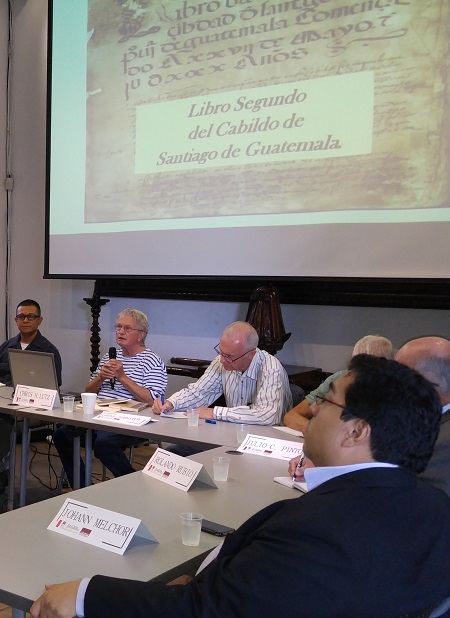
Antigua Guatemala, june 25, 2016, round-table conference about Libro de Cabildo number two of the city of Santiago de Guatemala, a register of events that took place between 1530 and 1541, recently discovered at the Hispanic Society of America, New York. Antonio de Remesal had access to this documentary source
Remesal gathered a great many documents
"In order to make this undertaking even more perfect, and even though I did not comprehend the divine order that pushed me, I travelled twice through New Spain to get in touch with the most knowledgeable men, listening to their stories and reading their writings, while transcribing what I had gathered, without removing or adding anything, principally in the books of the Chapter where could be found the stories of the foundations and the government of the cities." […]
"I do not draw up a catalog of the archives, printed and handwritten books, reports, stories, testimonies and information that I saw, to write this story. I can say in my favour that all these documents are true and authentic and come from trustworthy persons who referred to them and kept them preciously with veneration, faith and the conviction that they knew the past very well."
Antonio de Remesal concludes :
"Among the various styles of writing history, I chose a terse, concise and brief one that is better adapted to this kind of work and more suitable to my temperament; reserving for other treaties which I hope to create with the Lord’s blessing, a style that allows many considerations and warnings to the pious reader : for example, for a book on which I have been writing for several years and devoted to remarks and comments on the sermons of the evangelical St Thomas Aquinas, and where I tried to assemble what little I learnt about the Greek and Hebrew languages, the lessons of the Saints and expositive Theology, principal object of my studies.
"And because the aim of History is not to write things so that they are not forgotten, but how to live better in the light of experience, maestra muda, for edification and the public good, unhappy events making us wiser than good events, I only want to stress: although the main objective of this book is to deal with the foundation, the development and the present state of the province of San Vicente de Chiapa y Guatemala and with the excellent men it possessed in the fields of religion, letters and government that made it famous and renowned, these persons are here described as men subjected to all the weakness of the human condition which did not let them triumph all the time and in any situation. It is why if there was any aspect of their personality that was not covered with shining gold, they should be forgiven in view of their will to succeed or of their qualities described above; often times God authorizes some shortcomings from the most perfect men, so that other men understand that they are indeed perfect."
(Antonio de Remesal, Historia de la provincial de San Vicente de Chiapa y Guatemala, Prólogo)
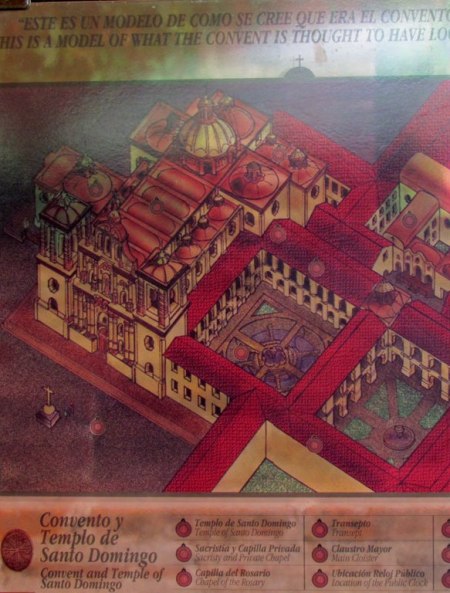
Antigua: The Dominican convent in the XVIIIth century (reconstitution)
Thomas Gage, English dominican, describes the convent of Santo Domingo in Antigua Guatemala, where Remesal was hosted:
"The Churches though they be not so fair and rich as those of Mexico yet they are for that place wealthy enough. There is but one Parish Church and a Cathedrall which standeth in the chief Marketplace : All the other Churches belonging to Cloisters, which are of Dominicans, Franciscans, Mercenarians, Augustines, and Jesuites, and two of Nuns, called the Conception and St. Catharine. The Dominicans, Franciscans, and Mercenarians are stately Cloisters, containing neer a hundred Fryers a piece ; but above all is the Cloister where I lived, of the Dominicans, to which is joined in a great Walk before the Church the University of the City.
"The yearly revenues which come into this Cloister, what from the Indian Towns belonging to it, what from a water-mill, what from a farme for Corn, what from an Estancia, or farme for Horses and Mules, what from an Ingenio, or farme of Sugar, what from a Mine of silver given unto it the year 1633, are judged to be (excepting all charges) at least thirty thousand duckats ; wherewith those fat Fryers fealt themselves, and have to spare to build, and enrich their Church and Altars.
"Besides much treasure belonging to it, there are two things in it, which the Spaniards in merriment would often tell me that the English Nation did much enquire after, when they took any ship of theirs at Sea, and that they feared I was to spie them, which were a Lampe of silver hanging before the high Altar, so big as required the strength of three men to hale it up with a rope ; but the other is of more value ; which is a picture of the Virgin Mary of pure silver, and of the stature of a reasonable tall woman, which standeth in a Tabernacle made on purpose in a Chappel of the Rosary with at least a dozen lampes of silver also burning before it. A hundred thousand duckats might soon be made up of the treasure belonging to that Church and Cloister.
"Within the wals of the Cloister there is nothing wanting which may further pleasure and recreation. In the lower Cloister there is a spatious garden, in the midst where of is a fountain casting up the water, and spouting it out of at least a dozen pipes, which fill two pounds full of fishes, and whith this their constant running give musicke to the whole Cloister, and encouragement to many water-fowles and Ducks to bath and wash themselves therein.
"Yet further within the Cloister, there are other two gardens for fruits and herbage, and in the one a pond of a quarter of a mile long, all paved at the bottom, and a low stone wall about, where is a boat for the Fryers recreation, who often goe thither to fish, and do sometimes upon a suddain want or occasion take out from thence as much fish as will give to the whole Cloister a dinner.
(Thomas Gage, A new survey of the West India’s or The English American his travail by sea and land, 1655, Book I, Chap. XVIII, Describing the Dominions, government, riches, and greatnesse of the City of Guatemala, and country belonging to it.)
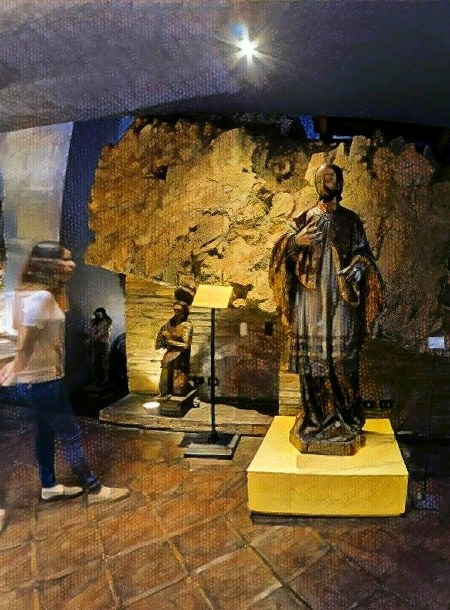
Antigua Guatemala: the ruins of the former Dominican convent, changed into hotel and museums
Antonio Vásquez de Espinoza at Antigua :
"607. The city of Guatemala is built in this valley 10 leagues from the Pacific, at 14° N. It has a marvelous springlike climate the whole year through and is abundantly and cheaply supplied with all necessities and luxuries needed for human life. It has over 1,000 Spanish residents, not counting the numerous transients, this being a city with active trade with all New Spain an Mexico City and the local provinces, with Spain, Peru, and Nicaragua ; they come here with silver and merchandise to exchange for cacao, indigo, cochineal, and other products which this country offers in abundance.
"608. It covers the area of a very large and thickly settled city ; the greater part of its houses are well designed and constructed, and the streets are straight and well laid out ; it has a main plaza which is square in form and attractive. At the ENE. corner stands the Cathedral, which is very large and capacious, among the finest in the Indies. The episcopal establishment is on that same corner, and at the opposite corner, about due S., are the Royal Apartments, which are very large and spacious. This is where the President lives and where the Judges of the Circuit Court have their headquarters ; they are Alcaldes de Corte and usually carry rods of office. Besides its President, this Circuit Court has five Associate Judges, an Attorney, two Secretaries, a Relator, and the other officials. The State Prison is on the same corner.
"609. Opposite this corner with the royal establishment, and approximatly on the N. side, is a whole block of arcades of excellent construction, occupied by the scribes and various shops of merchandise. The other corner, across from the Cathedral, is likewise filled with well-built arcades, occupied by shops and grocery stores. On one side of the plaza is a fountain of excellent water which is patronized by a large part of the residents, although the city is abundantly supplied with water. Each corner engages two of the chief streets, so that from one angle of the plaza one sees the convent of the Mercedarians, of Santa Catalina, and of the Jesuits ; from another, the Augustinian convent ; from another, the nunnery of La Concepción, and the General Hospital of the city.
"610. This city has splendid convents : the Dominican is very sumptuous and well built, with a magnificent and beautifully decorated church and cloisters ; it has very pious and learned friars, but in consequence of the humility and the great reform in dress and manners which they observe, they do not wear academic costume (graduan). This is the mother convent for the whole province within the district of this Circuit Court, although they have convents established only in this Diocese of Guatemala, in that of Chiapa, and in Vera Paz, which latter was given up. In this splendid convent they give courses in Arts and Theology, which they teach with great care and vigilance, as is always the case with this hallowed order ; and connected with it they have a college where they teach the same sciences and others. But they suffer great inconvenience and difficulties through the fact that Mexico City is almost 300 leagues away and requires many days’ journey. Accordingly the city desires and solicits His Majesty to grant them the favor of establishing a university there ; the city offers to provide an adequate income, both for the reasons stated above and because in that case the young men of the city and country will have greater facilities for study here ; many parents cannot afford to maintain their sons in the graduate schools of Mexico City or elsewhere, on account of the great expense and distance involved.
"611. Near this convent there is another plaza smaller than the main square, called the Plaza de San Domingo ; in it and the neighboring streets are the business and residential center and the chief activity and traffic of the city, where the traders congregate, both for the sale of clothing for the Indians and of country produce, and for the purchase of such commodities for export to the provinces of all that country."
(Antonio Vásquez de Espinosa, "Compendio y Descripción de las Indias Occidentales", 1627-1629, Book V. Chapter VII. Of the City of Santiago de Guatemala, Its Size, Its Convents and the Other Churches It Contains. Translated by Charles Upson Clark, Smithsonian Institution)
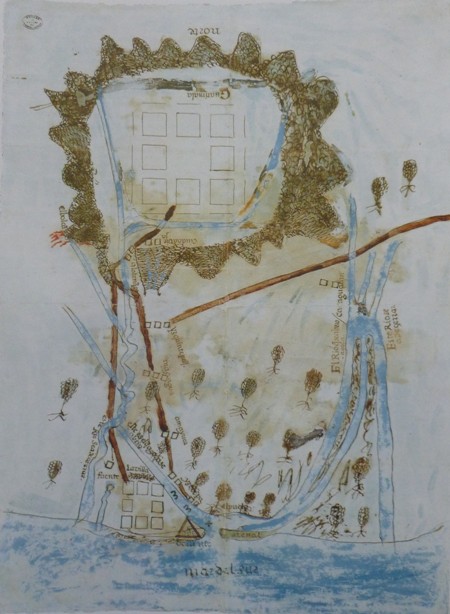
Antigua (Guatemala) and its harbour of Iztapa, map by Pedro Ochoa de Leguizamo, 1598, Archivo General de Indias, Sevilla
William Funnel, 1707:
"This Vulcan of Guatimala commonly throws out fire, but mostly in the rainy season ; which is from the latter end of april to the beginning of october. For the rain then falling on it, makes it burn the fiercer. Behind this Vulcan is said to be the great City of Guatimala, which consists of 8500 families, besides the suburbs called St Domingo ; in which may be about 350 families more, besides innumerable of Mullattoes, Mastese and Indians. It is accounted, next to Lima and Mexico, to be the biggest and best traded city in all America. It is govern’d by a President ; who in is own territories, is as great as the Vice-Roys, (of Peru and Mexico,) and is not subordinate to either of them, but only to the Council of Spain. The natives of this place are very expert in feather-work. They will make either fish, fowl, or beast ; flowers, trees, herbs and roots to admiration ; nay, they will for a whole day eat nothing, only to place one feather in its due perfection ; turning and tossing the feather to the light of the sun, and then in the shade, to see in which it looks best, and so accordingly place it. At this place growth abundance of cocoa, beef, mutton and veal, is here so cheap, that for a Ryal, which is seven pence half-penny, one may buy 25 Pounds. This famous city has been twice destroy’d by two dreadful mountains, which stand near it ; the one being of Water, which drowned it ; and the other of Fire, which formerly burnt it ; but now the Spaniards have removed the city three leagues further off ; where they now live without fear of the two vulcans ; although, as I said before, that of Fire continually burns all the winter, but without doing them damage, because the city is so far off."
William Funnel, A voyage round the world, in the years 1703 and 1704, London, printed for J. Knapton, 1707
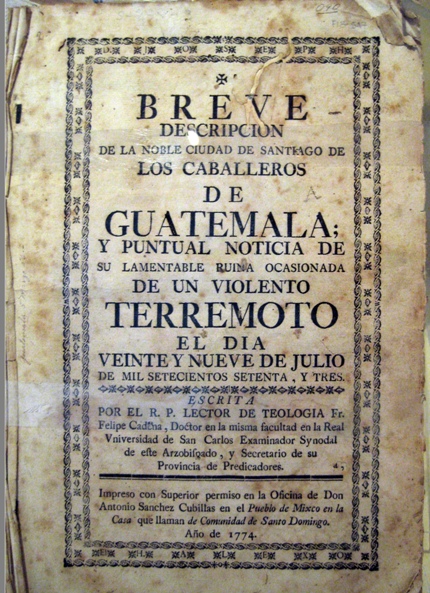
Antigua, 1774, "Breve descripción de la noble ciudad de Santiago de los caballeros de Guatemala; y puntual noticia de su lamentable ruina ocasionada de un violento terremoto el día veinte y nueve de julio de mil setecientos setenta, y tres". In 1773, three catastrophic earthquakes once more destroyed the city and 3 years later the King of Spain allowed the capital to be moved to a safer ground at Guatemala City
Antonio de Alcedo, 1786
"GUATEMALA, SANTIAGO DE, The City of, the capital of the aforesaid province and kingdom ; founded by Pedro de Alvarado in 1524, in a valley surrounded by mountains ; but where it remained only a short time, from its having been inundated by a violent tempest of rain, and entirely destroyed. Its inhabitants, in rebuilding it, removed its situation to a spot in the same valley, about half a league’s distance.
The temperature is mild, and it abounds in wheat, maize, and all kinds of fruit, as well European as American. In its territory is found much cochineal and cacao, these being the principal fruits of its commerce; also cattle of every species, which have multiplied in an incredible manner. It was situate on the skirt of a volcano, contained six convents of the religious order of St. Domingo, St. Francis, St. Augustin, La Merced, San Juan de Dios, and a college which belonged to the Jesuits; also two monasteries of St. Dominic, one with the title of La Conception, the other of Santa Catalina Martin; an hospital which was founded by its first bishop, another of San Lazaro, for lepers, which was at a quarter of a league’s distance from the city, and the third of San Alexo, under the care of the religious order of St. Domingo; a college, which is a seminary, and another called De la Asuncion. It has been destroyed several times by earthquakes, and was totally extirpated in 1775, having been rebuilt by the president Don Martin de Mayorga, at some distance from where it before stood. This city was the head of a bishopric, erected by the chief pontiff Paul III, in 1534, and afterwards made metropolitan, at the instance of Philip V. king of Spain, by Benedict XIV, in 1742, when for its suffragans were appointed the bishopric of Nicaragua, Chiapa, and Comayagua. It is the residence of the president, who is governor and captain-general of the kingdom, and also of the tribunal of the royal audience."
(Antonio de Alcedo, Diccionario geografico-histórico de las Indias Occidentales o América: es a saber: de los Reynos del Peru, Nueva España, Tierra Firme, Chile y Nuevo Reyno de Granada. Madrid, 1786/89)
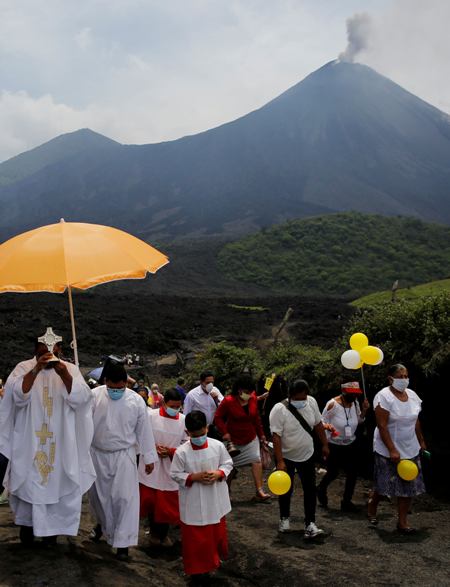
Procesion to the Pacaya volcano, near Antigua, 2021, May
Universal History, 1788
"St. Yago de Guatimala, standing in fourteen degrees north latitude, about nine leagues from the South Sea, is the capital. Formerly this was among the noblest cities in New Spain, before it was destroyed in 1541, by a dreadful hurricane, in witch an hundred and twenty thousand Spaniards and natives lost their lives. Never appeared a more terrible and awful scene than this: the day preceding a prodigious noise was heard from the bowels of the volcano, seated in the mountain above the city, which was succeeded in the night by a furious explosion, as if the earth had discharged all her bowels ; and a torrent of water issuing from the mountain that swept all before it , and carried off houses and inhabitants. The horror of the scene was heightened by one of the most dreadful earthquakes ever felt in any part of the globe. New Guatimala, the present capital of the audience and province, the residence of the president and royal courts, the seat of a bishop, and the center of commerce in these parts, is situated in a beautiful plain at a good distance from the fatal volcano ; however, all the precautions cannot secure it against the dreadful earthquakes, so frequent in this country. It is, nevertheless, well-built and well-inhabited, the citizens trafficking largely, not only with all the provinces of Mexico, but even with Peru. In this way immense fortunes are raised, with which the parties then retire to the neighbourhood of the capital of the empire, to spend the remainder of their days in the fullest enjoyment of riches."
(The Modern Part of An Universal History, from the Earliest Account of Time, Volume 39, The history of America, by George Sale, George Psalmanazar, Archibald Bower, George Shelvocke, John Campbell, John Swinton, London, 1788)
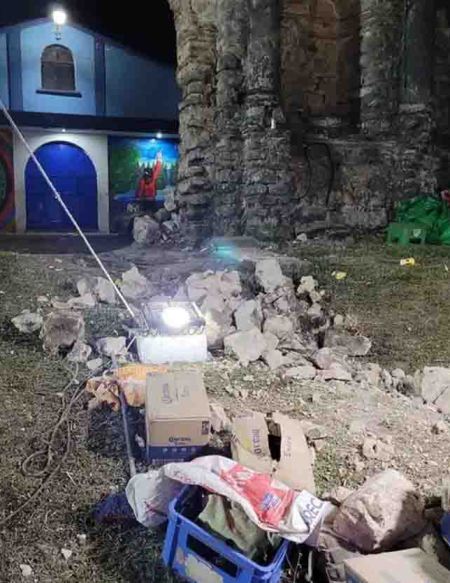
Antigua Guatemala: damages caused by the earthquake occured in January, 17, 2024
2025 "Friars and Mayas"
|


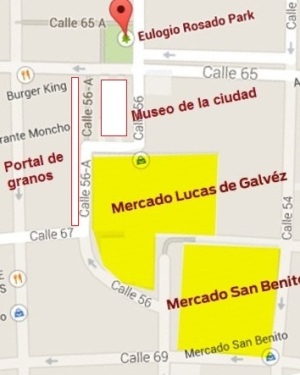
The markets of Merida, former site of the Franciscan convent
“XXXVI – There is in the city a monastery of Franciscans that was the first to be founded in these provinces by a Franciscan named Fray Juan de la Puerta, a learned man and a preacher. He later died as bishop-elect of these provinces in Spain. Usually there are eighteen friar priests as well as laymen that administer the sacraments to the native Indians of the towns closest to this city. The monastery was constructed with the labor and work of the Indians native to this city. The house is entirely of stone, and the church boasts a nave with an extremely well-made arch. It is outside of the walls of the city toward the southeast.”
(Martin de Palomar – Gaspar Antonio Chris. Description of the town and province of Mérida. Relaciones geográficas, 1579)
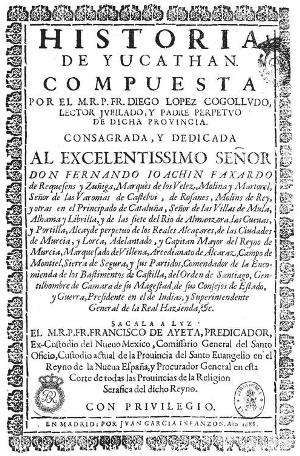
First publication of "Historia de Yucatán", Madrid, 1688
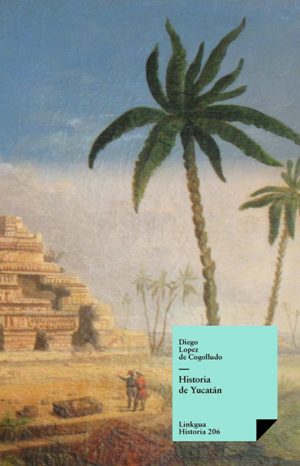
A modern publication of Historia de Yucatán (Linkgua ediciones, Barcelona, 2006)
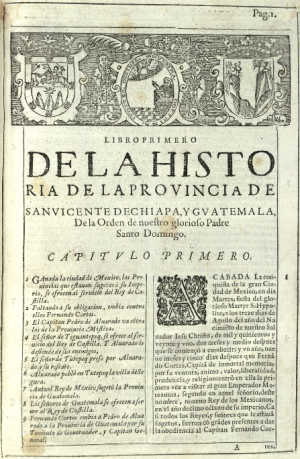
First publication of "Historia de la provincia de San Vicente de Chiapa y Guatemala" or "Historia general de las Indias occidentales y particular de la gobernación de Chiapa y Guatemala", Madrid, 1619
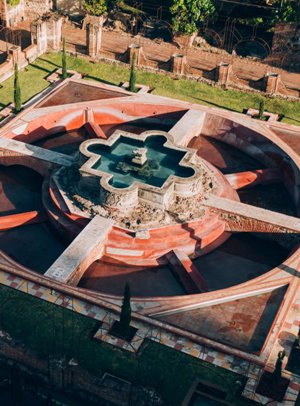
A fountain, in the hotel Casa Santo Domingo, built on top of the remains of the Dominican convent in Antigua
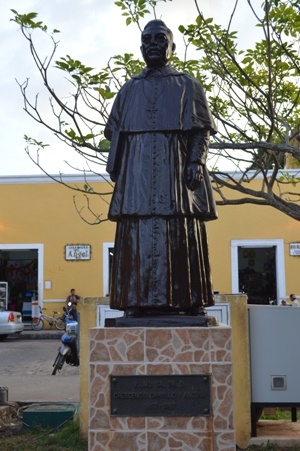
An other historian, Bishop Crescencio Carrillo y Ancona, author of Historia Antigua de Yucatán, 1881. His statue at Izamal